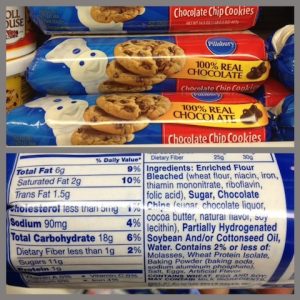Transparency of Trans Fat
Just last week, the FDA announced it will require food manufacturers to begin phasing out trans fat from foods, as it has been deemed a direct threat to health. Since 2006, it has been a requirement for product labels to indicate the presence of trans fat. However, based on new scientific evidence, the FDA issued a Federal Register notice announcing that partially hydrogenated oils, the primary source of industrially-produced trans fatty acids, or trans fat, are not “generally recognized as safe” (GRAS). Read more to understand what this means for you and your family.

What is trans fat anyway?
Trans fat occurs naturally in meat and dairy products. However, most of the trans fat consumed is industrially created. Artificial trans fat is found in partially hydrogenated oils (PHOs), produced by a chemical reaction, whereby fatty acids are reconfigured to increase the melting point, shelf life, and flavor stability. This reconfiguration can make liquid oils more solid at room temperature, enabling manufacturers to use liquid vegetable oils in baking instead of butter, where more solid fat is required. PHOs are found in many popular processed foods including baked goods (cookies, cakes, shelf-stable muffins), refrigerated dough products, frozen foods (pancakes, waffles), coffee creamers, microwave popcorn, even “heart-healthy” margarine!
What makes it so bad?
Research has shown a direct correlation between the intake of trans fat and increased levels of LDL cholesterol (“bad” cholesterol). Trans fat is considered the worst fat for your heart, even worse than saturated fats (found in butter, cream, cheese, palm kernel oil, and other animal products), which can also contribute to an increased risk of heart disease.
What should I look for?
Though quantity of trans fat is listed on the Nutrition Facts panel, it is important to look at the actual ingredients to determine the safety of your food. Under current regulations, companies can claim “zero grams of trans fat or trans-fat free” if the food contains less than 0.5 grams of trans fat per serving. Thus, consuming larger servings or selecting multiple foods with trans fat ingredients can add up to significant intake. Looking for the words partially hydrogenated oil OR hydrogenated oil within the list of ingredients is the best way to determine if your food contains trans fat.
Related Links:
SEE LARA ON FOX NEWS DISCUSSING THE FDA TRANS FAT ANNOUNCEMENT: November 13, 2013